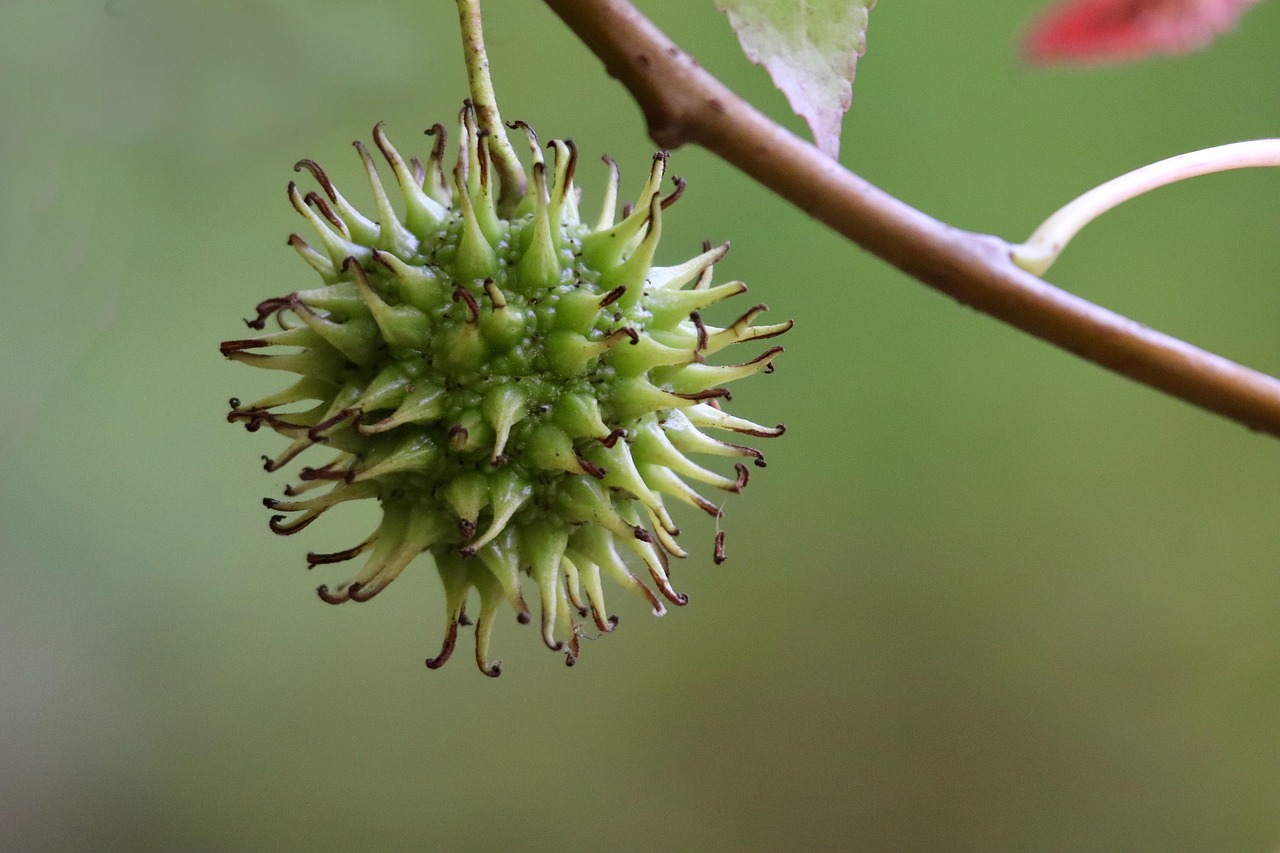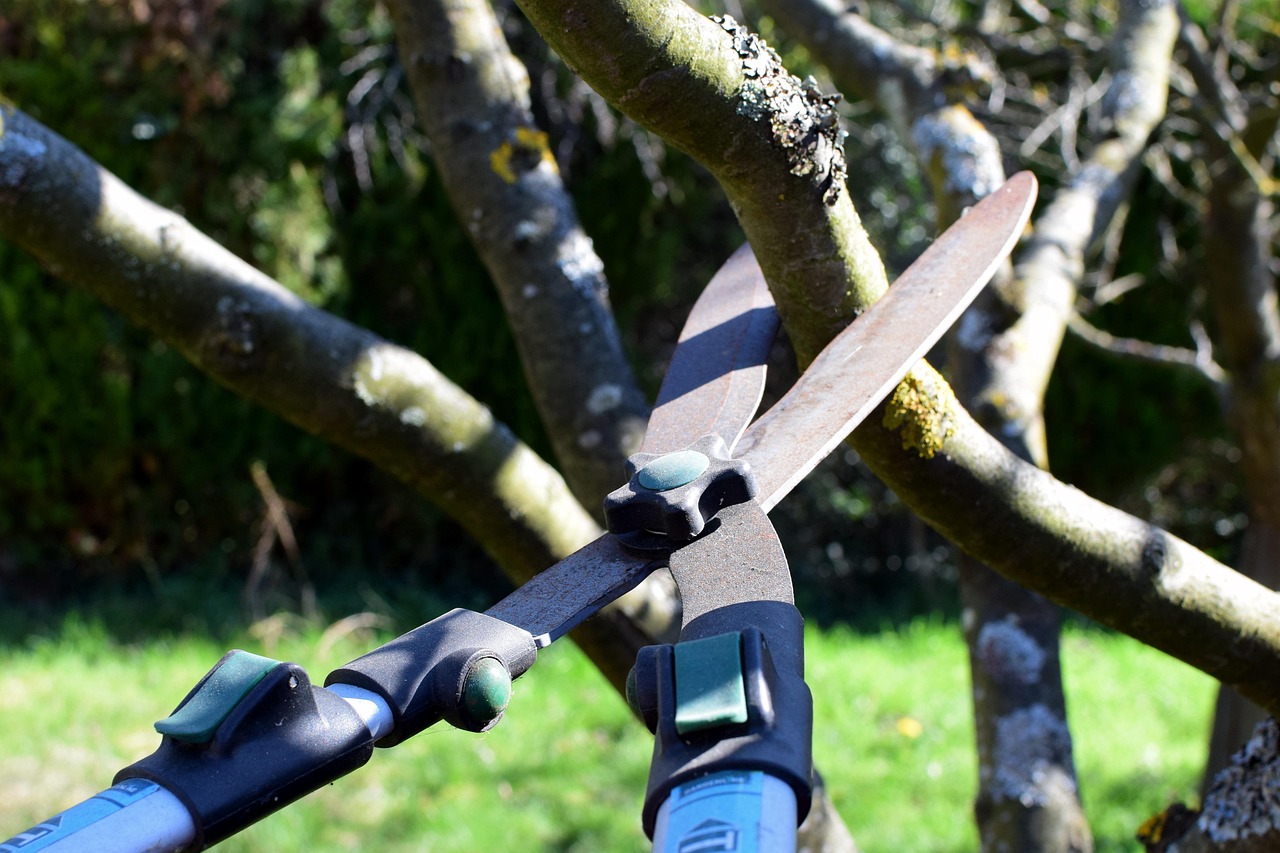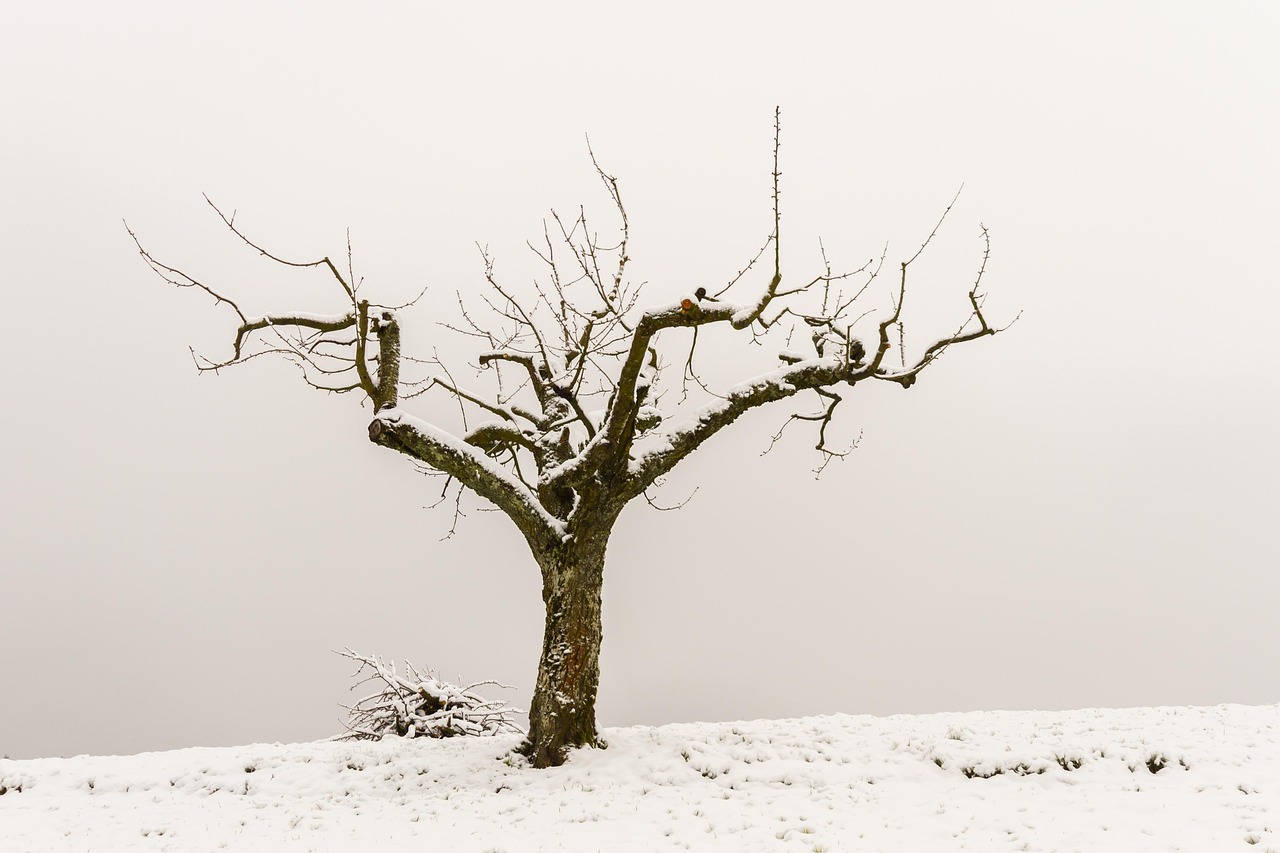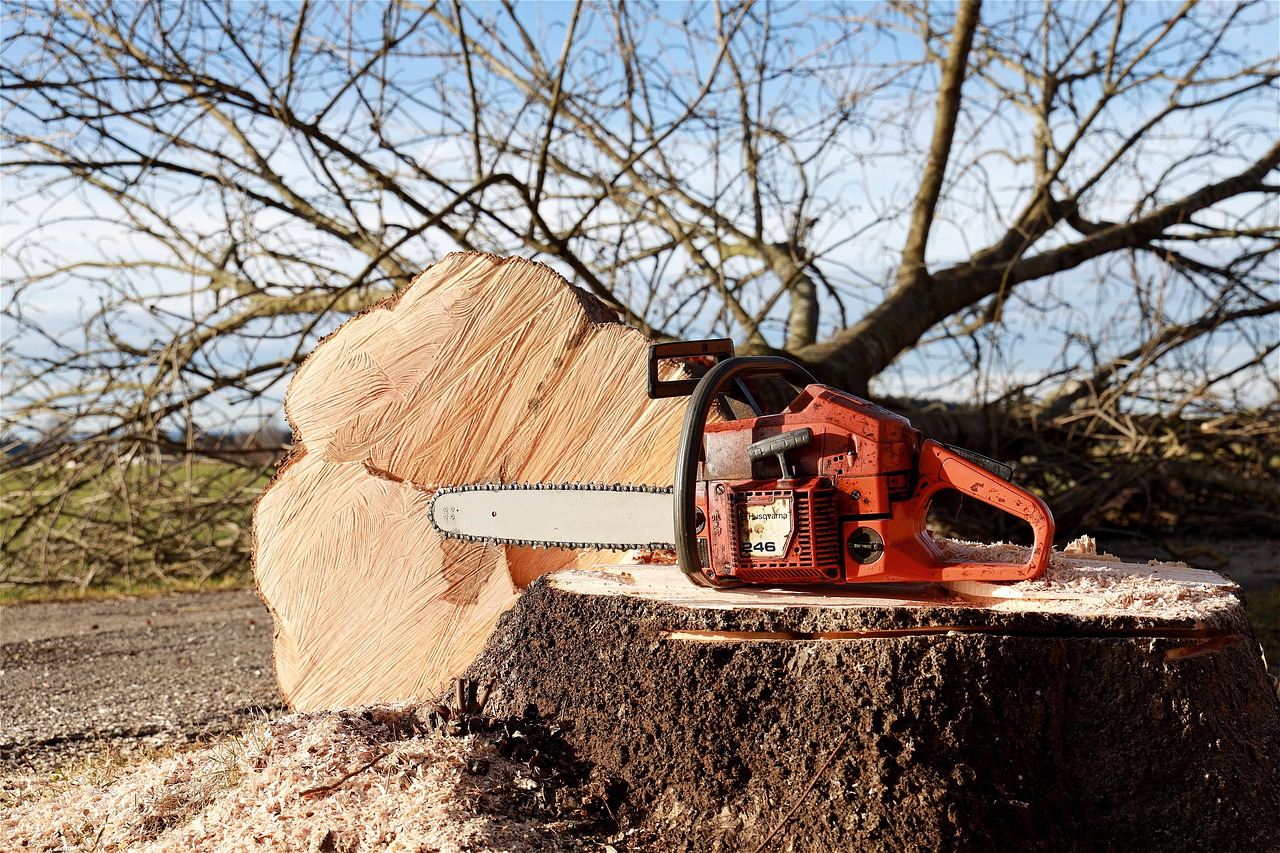Fruit tree pruning is essential for organic and certified gardeners. It promotes healthy growth, improves fruit quality, and maximizes yields. Proper techniques help in disease prevention and encourage the development of a strong structure, making trees more resilient and productive.
Pruning is a vital practice in fruit tree management. It involves the selective removal of certain parts of the tree to enhance its health and productivity. Organic gardeners, in particular, must pay close attention to pruning methods. This is because they aim to maintain a natural ecosystem while promoting plant health without synthetic chemicals.

When done correctly, pruning can help improve air circulation and sunlight penetration, both of which are crucial for the tree’s overall health. Additionally, pruning can reduce the risk of disease by eliminating dead or diseased branches. For certified organic gardeners, understanding the proper techniques and timing for pruning is essential to adhere to organic standards.
Understanding Pruning Techniques
There are several pruning techniques that every gardener should understand. Each technique serves a purpose and can be applied based on the specific needs of the tree. Below are some common pruning methods used by organic gardeners:
- Thinning: This method involves removing entire branches or shoots to improve air circulation and sunlight exposure.
- Heading: In this technique, the tips of branches are cut back to promote bushier growth.
- Reduction: This involves shortening branches while maintaining their overall structure, which can help control the size of the tree.
- Cleaning: This technique focuses on removing dead, damaged, or diseased wood to maintain tree health.
Understanding when to apply these techniques can significantly affect the productivity of fruit trees. Timing is crucial to ensure that trees recover quickly and effectively from pruning.

Optimal Pruning Times
The best time for pruning fruit trees largely depends on the type of tree and its growth habits. Generally, late winter or early spring is considered the best time for most fruit trees. During this period, trees are still dormant and can heal quickly from cuts. However, some trees may require different timing:
| Tree Type | Best Pruning Time |
|---|---|
| Apple | Late winter to early spring |
| Pear | Late winter |
| Cherry | Summer after harvest |
| Peach | Late winter |
This table highlights common fruit tree types and their optimal pruning times. Following these guidelines helps ensure that trees remain healthy while maximizing fruit production.
Tools for Pruning
Having the right tools is essential for effective pruning. The following tools are commonly used by organic gardeners:

- Hand Pruners: Ideal for cutting small branches and stems.
- Loppers: Useful for thicker branches that require more force.
- Saw: A small pruning saw is necessary for larger branches.
- Gloves: Protect hands from cuts and scrapes while working.
- Ladder: For reaching higher branches safely.
Each tool serves a specific purpose. Using the appropriate tool not only makes the job easier but also ensures clean cuts that promote faster healing for trees.
Pruning Techniques for Organic Practices
Organic gardening emphasizes sustainability. Thus, it is important to use techniques that promote long-term health for fruit trees. Here are some practices that align with organic principles:
- Avoiding Chemical Treatments: Use natural solutions for pest control after pruning.
- Companion Planting: Consider planting beneficial species nearby to deter pests naturally.
- Mulching: Apply organic mulch around the base of trees to retain moisture and suppress weeds.
These practices not only enhance tree health but also contribute positively to the overall garden ecosystem. By integrating these methods, organic gardeners can achieve better results while adhering to their environmental values.

In summary, effective fruit tree pruning requires knowledge of techniques, timing, tools, and organic practices. Understanding these fundamental aspects will help gardeners cultivate healthier trees and improve fruit yields over time. As we delve deeper into this topic, we will explore specific pruning styles and the effects they have on different types of fruit trees.
Pruning Styles for Different Fruit Trees
Each type of fruit tree has specific characteristics that influence the best pruning method. Understanding these differences can lead to more effective pruning and healthier trees. Below are common fruit trees and recommended pruning styles.
Apple Trees
Apple trees benefit from a combination of thinning and heading cuts. The primary goal is to maintain a strong central leader while allowing for lateral growth. This structure supports better fruit production and air circulation.
- Central Leader System: Ideal for taller apple trees, this involves keeping one main stem and removing competing branches.
- Open Center System: Suitable for dwarf varieties, this method encourages a wide-open structure for improved light access.
Pear Trees
Pear trees are often pruned similarly to apple trees. However, they require more attention to their unique branching habits. Pears tend to produce fruit on older wood, making it crucial to balance removing younger and older branches.
- Start by removing any dead or damaged wood.
- Thin out crowded areas to promote good airflow.
- Maintain older wood to support fruit production.
Cherry Trees
Cherry trees can be more challenging due to their susceptibility to diseases like bacterial canker. Pruning should focus on removing diseased branches and maintaining an open canopy to enhance sunlight exposure.
- Summer Pruning: This technique is beneficial for cherry trees. It helps control growth and shape while minimizing disease risk.
- Remove Suckers: Regularly check for suckers at the base of the tree and remove them to direct energy toward fruit production.
Peach and Nectarine Trees
Peach and nectarine trees thrive with aggressive pruning as they produce fruit on new growth. This means pruning should occur during the dormant season to encourage robust growth in the spring.
- Focus on removing dead or weak branches.
- Thin out excess growth to encourage larger fruit size.
- Cut back last year’s growth by one-third to stimulate new shoots.
The Importance of Sanitation in Pruning
Sanitation is a critical component of effective pruning, particularly in organic gardening. Keeping tools clean can prevent the spread of diseases among trees. Here are some sanitation practices to follow:
- Clean Tools: Before and after pruning, disinfect tools using a solution of 10% bleach or rubbing alcohol.
- Dispose of Debris: Collect and properly dispose of any cuttings or branches that may harbor diseases.
- Avoid Wet Conditions: Prune during dry weather to reduce the risk of spreading pathogens.
Recognizing Signs for Pruning
Knowing when and what to prune goes hand-in-hand with recognizing the right signs. Observing your tree’s overall health is crucial. Here are some indicators that your fruit tree may need pruning:
- Overcrowding: If branches are crossing or densely packed, it may be time to thin them out.
- Pest Infestation: Signs of pests may indicate a need for pruning to eliminate affected areas.
- Disease Symptoms: Look for any sign of decay, cankers, or unusual growth patterns that necessitate removal.
- Poor Fruit Production: A lack of fruit or smaller-sized fruit can suggest that the tree needs structural adjustments through pruning.
Training Young Trees
Training young fruit trees during their early growth stages helps establish a strong framework. This practice can significantly influence their future productivity and health. Below are some effective training methods:
Staking
Staking young trees can provide support as they grow, helping them develop straight trunks and strong root systems. Use soft ties to avoid damaging the bark, and remove stakes after the first few years once the tree is established.
Crown Management
Crown management involves guiding the shape of the tree as it grows. This can be achieved through selective pruning to promote an open center or maintaining a central leader, depending on the species.
Pinching
This technique involves removing the tips of young shoots to encourage bushier growth. Pinching can help create a fuller canopy and promote branching, which is essential for fruit production later on.
By understanding these various aspects of pruning different types of fruit trees, gardeners can enhance their skills and improve their garden’s output. Proper training, sanitation, and recognition of signs will prepare gardeners for successful fruit tree management as they continue their organic gardening journey.
Common Mistakes in Pruning
Even experienced gardeners can make mistakes when pruning fruit trees. Understanding these common errors can help avoid issues that may hinder tree health and fruit production. Here are some prevalent mistakes to watch out for:
- Pruning at the Wrong Time: Pruning too early or too late can stress the tree. Ideally, pruning should be done during the dormant season, but specific timing may vary by species.
- Over-pruning: Removing too much foliage can lead to reduced fruit yield and weak growth. It’s essential to maintain balance and not remove more than one-third of the tree’s branches in a single season.
- Neglecting Sanitation: Failing to clean tools between cuts can spread diseases among trees. Keeping tools disinfected is crucial for maintaining tree health.
- Ignoring Tree Structure: Not considering the natural growth habit of the tree can lead to structural weaknesses. Always aim for a form that supports healthy growth.
Understanding Tree Growth Patterns
To prune effectively, it is vital to understand how trees grow. Different species exhibit distinct growth patterns that influence pruning techniques. Here are some key concepts:
Growth Habits
Trees generally have two types of growth: vegetative and reproductive. Understanding these habits allows gardeners to make informed pruning decisions.
- Vegetative Growth: This type of growth focuses on producing leaves and stems. It is essential for overall tree health and vigor.
- Reproductive Growth: This refers to the development of flowers and fruit. Pruning during the right phase promotes better fruit production.
Types of Buds
Recognizing different types of buds can inform pruning strategies. There are two main types of buds on fruit trees:
- Leaf Buds: These buds will develop into leaves and are typically smaller.
- Flower Buds: Larger and rounder, these buds will produce flowers and eventually fruit. Understanding the placement of these buds is crucial for effective pruning.
The Role of Watering and Nutrition
Watering and nutrition play significant roles in the success of fruit trees, particularly after pruning. Proper care ensures that trees recover quickly and maintain vigor throughout the growing season.
Watering Practices
After pruning, trees may experience stress. Adequate watering is essential to support recovery. Here are some tips for effective watering:
- Deep Watering: Water deeply but less frequently to encourage root growth. A slow soak at the base of the tree is preferable.
- Avoid Overwatering: Ensure good drainage to prevent root rot. Check soil moisture before watering.
Nutritional Needs
Nutrients are vital for recovery after pruning. Organic fertilizers can provide essential elements without harming soil health.
- Nitrogen: Promotes new growth and is crucial after pruning. Use organic sources like compost or well-rotted manure.
- Potassium and Phosphorus: Important for flower and fruit development. Ensure balanced nutrition throughout the growing season.
Pest and Disease Management Post-Pruning
Pest and disease management should be a priority after pruning, as open cuts can be entry points for pathogens. Here are some strategies to protect trees:
Monitoring for Pests
Regular inspections are crucial for early detection of pests. Some common pests include:
- Aphids: Small insects that can weaken trees by feeding on sap.
- Caterpillars: They can defoliate trees quickly, impacting overall health.
If pests are found, consider using organic pesticides or introducing beneficial insects, such as ladybugs, which can help control pest populations naturally.
Disease Prevention
Diseases like fungal infections can thrive in pruned areas if proper care is not taken. Here are some preventive measures:
- Copper Fungicide: Applying a copper-based fungicide can help protect wounds from infection.
- Avoid Wound Dressings: Many experts recommend against using sealants, as they can trap moisture and lead to decay.
Utilizing Resources and Education
Continuous education is key for successful fruit tree pruning. There are numerous resources available for gardeners looking to enhance their skills:
- Local Extension Services: Many universities offer workshops and expert advice on fruit tree management.
- Online Courses: Various gardening websites provide detailed courses on pruning techniques specific to fruit trees.
- Books and Guides: Investing in reputable gardening books can broaden your understanding of organic practices and pruning methods.
By leveraging these resources, gardeners can improve their knowledge base, leading to healthier trees and more abundant harvests. Engaging with local gardening communities can also provide support and shared experiences that enhance the learning process.
Advanced Pruning Techniques
For those seeking to deepen their understanding of fruit tree pruning, advanced techniques can significantly enhance tree health and productivity. These methods require a bit more skill but can yield remarkable results.
Espalier
Espalier is a technique that involves training trees to grow flat against a wall or trellis. This method not only saves space but also allows for better sunlight exposure and air circulation. To create an espalier:
- Select the Right Variety: Choose a fruit tree variety that is conducive to espalier, such as apple or pear.
- Establish a Framework: Install a trellis or support structure to guide the growth of the tree.
- Regular Training: Use ties to secure branches to the frame, pruning as necessary to maintain the desired shape.
Crown Reduction
Crown reduction is an advanced technique aimed at reducing the height of a tree while maintaining its shape. This method is particularly useful for overgrown trees that may obstruct sunlight or pose a risk of breakage.
- Identify Key Branches: Focus on the main branches that can be cut back to promote a wider canopy.
- Cut Just Above a Lateral Branch: This encourages new growth without leaving large stubs that can decay.
Renewal Pruning
Renewal pruning involves removing older wood on certain fruit trees, such as peaches and plums, to stimulate new growth and enhance fruit production. This technique is usually performed on trees that have not produced fruit for several seasons.
- Identify Older Branches: Look for branches that are thick and less productive.
- Remove Selectively: Cut back one-third of these branches each year to encourage new growth while maintaining the tree’s overall structure.
Seasonal Considerations for Pruning
The changing seasons influence how and when to prune fruit trees. Each season offers unique opportunities for different types of maintenance:
Spring Pruning
Spring is an ideal time for light pruning, especially for trees that bloom later in the season. This helps shape the tree before it enters its growing phase. Key activities include:
- Removing Dead or Damaged Wood: This promotes healthier growth and reduces disease risk.
- Thinning Out Crowded Branches: This ensures adequate sunlight and airflow for better fruit production.
Summer Pruning
Summer pruning can be beneficial for managing growth and controlling tree size. It is especially effective for cherry trees, which can benefit from reduced leaf density.
- Pinching New Growth: This encourages lateral branching and a fuller canopy.
- Removing Suckers: Regularly check for suckers and remove them to direct energy toward fruit production.
Fall Pruning
Fall is typically not recommended for most pruning activities due to the potential for disease spread. However, light maintenance can be done:
- Cleaning Up Debris: Remove fallen leaves and fruit to prevent pests and diseases from overwintering.
- Light Thinning: If necessary, remove any remaining dead or diseased branches.
Cultivating Community Knowledge
A strong community of gardeners can serve as an invaluable resource for learning about fruit tree pruning and organic gardening practices. Engaging with local gardening clubs or online forums allows individuals to share experiences and tips. Consider the following approaches:
- Join Local Gardening Clubs: These groups often host workshops and provide hands-on learning opportunities.
- Participate in Online Forums: Websites dedicated to gardening can be excellent resources for advice and troubleshooting.
- Attend Gardening Shows or Expos: These events typically feature demonstrations and lectures from experts in the field.
Conclusion
Fruit tree pruning is a crucial skill for organic and certified gardeners aiming to cultivate healthy trees and bountiful harvests. By understanding various pruning techniques, recognizing growth patterns, and implementing seasonal strategies, gardeners can effectively enhance the vitality of their trees. Moreover, utilizing available resources such as local extension services and community engagements fosters continuous learning and improvement in gardening practices.
The journey of mastering fruit tree pruning not only leads to improved yields but also enriches the overall gardening experience. As you develop your skills, remember that patience and observation are key. With time, your efforts will result in thriving fruit trees that provide nourishment and beauty for years to come. Embrace the learning process, share knowledge with fellow gardeners, and enjoy the fruits of your labor!
